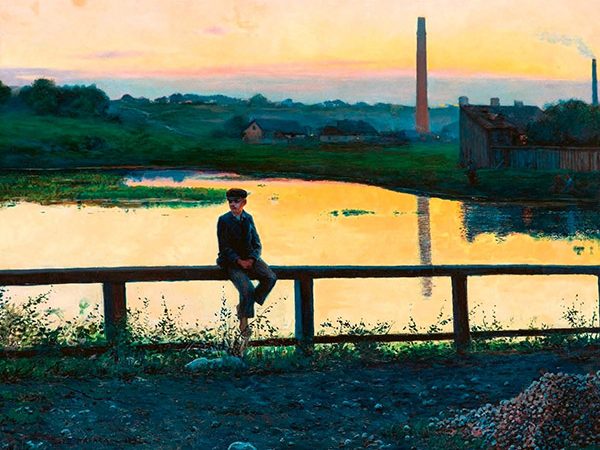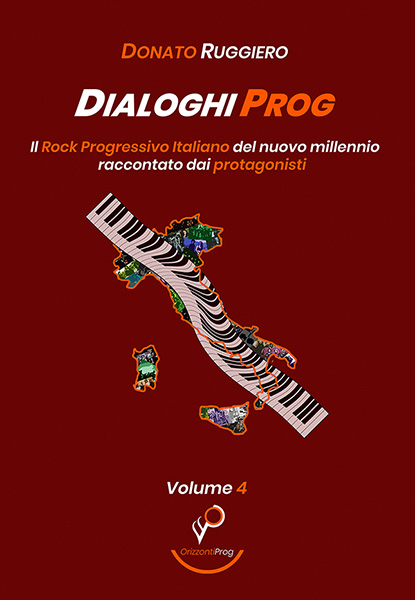 SINTESI DEL VIAGGIO DI ES
SINTESI DEL VIAGGIO DI ES
Gli alberi di Stavropol (2022)
Lizard Records
Stavropol, a Russian city in the North Caucasus at the foot of Mount Elbrus. A green city with many trees, a city with a lot of wind. At night the wind moves the trees and the trees whisper to each other, talk, comment on the things of the world and the fantastic and the real merge. I hear them from my room on Moskovskaya, and I hear their voices flowing towards Dobroljubova but I still don’t understand. What are they preparing?
Five years after their debut album “Il sole alle spalle”, Sintesi del Viaggio di Es are back with a new album: Gli alberi di Stavropol.
With a consolidated six-piece line-up that still includes Nicola Alberghini (drums), Marco Giovannini (vocals, backing vocals), Eleonora Montenegro (flute, backing vocals), Sauro Musi (electric, acoustic and classical guitar), Maurizio Pezzoli (keyboards) and Valerio Roda (bass, fretless, piano in Adria), and with guests Barbara Rubin (violin in Adria) and Maria Grazia Ponziani (diatonic accordion in Grazie per gli anni e per i giorni), the Sintesi del Viaggio di Es, inspired by the ‘green inhabitants’ of the Russian city, realise a work that makes elegance its strong point.
Gli alberi di Stavropol shows an often surprising delicacy and intensity, a stunning balance of sounds, lyrics with an imaginative style full of poetry and restlessness, a songwriting essence that does not hurt at all, no desire to overdo it, with the cover photograph by Andrej Loginov that fits perfectly into the groove of the album. And the references to Sithonia, in the DNA of Valerio Roda, Marco Giovannini and Sauro Musi (the latter featured on the album ‘Hotel Brun’), are certainly not lacking. And that is a good thing.
Foglie d’autunno cadono lente / ogni ricordo appeso ad un ramo, / destini estivi che non s’incrociano mai / belle parole disperse nel vento. […]. Velvety begins Gli alberi di Stavropol. It’s Giovannini’s warm voice that leads us through the dulcet notes of Come le foglie (Parte 1), a poetic at times poignant, with the enchanted touch of the flute truly remarkable and the soft warp of rhythmics, piano, guitar and bass completing the pleasant picture. Montenegro and Musi also manage to carve out spaces to “show themselves” even more clearly.
With grace here appears the title track Gli alberi di Stavropol. The intertwining of flute and strings is sublime and continues with the same interpretative intensity even when Giovannini takes over Eleonora’s instrument. And when the voice hardens, well supported by the strokes of Alberghini’s skins, the song veers towards very rock sonorities (there is a hint of recent PFM). Musi’s solo is interesting and he then clings tightly to the flute in a beautiful duet, before resuming the soft opening track, enriched by Pezzoli’s electronic sounds. Great coda. And, in the background, Roda never fails to provide support. […] Le ombre proiettano / nella mia stanza / le voci degli alberi. / in un momento soltanto / capisco i discorsi, / capisco le ombre. / Ed il vento va / porta tutto con sé […].
Rock energy and symphonic/neo-prog essence for Regina in lacrime introduction. Once again Giovannini’s singing exudes warmth and involvement, before Alberghini’s tribal touch launches Musi’s rough solo, with massive support offered by Roda. And the variations, always dynamic, follow one another relentlessly, until the whole is handed over to the suave intervention of the flute, which, thanks also to the keyboards, gives a more tender and dreamy soul to the song. And even the piano, a little further on, has its say in this respect, finally laying the carpet for a goose-bump ending.
Lots of aggression in the first part of L’età d’oro, with the rhythmic duo imparting a high rhythm, excellently picked up by Musi’s distortions and Giovannini’s well-shaped singing. And it’s a “rough” path, different from what we’ve heard so far, which comes to “purify” itself slightly in the middle, with the fine bickering between guitar and flute, while the rhythmic session continues its march in the background until the conclusion. […] E io spesso mi chiedo / dove sono quei sogni? / Persi, fuori di noi. / Sciolti, nella realtà. / Svaniti con il tempo. / Oppure vivi, dentro di noi? […].
Adria. The interweaving created by piano, violin and, later, guitar is touching. Guest Barbara Rubin’s strings, her flair and grace, fly over everything and everyone, in a truly touching and sublime performance. A guarantee. A short but dense and intense episode.
The “sung” journey is immediately resumed with Una nuova passeggiata, with a great dialogue between the voice and the well-constructed musical element, set to a slow but well-characterised rhythm by Alberghini and Roda, with excellent interventions by the flute and guitar, with the latter taking over the scene a little further on with an interesting solo, excellently supported by the change of pace of the rhythms. And Sintesi del Viaggio di Es enjoy playing with atmospheric changes, always well thought-out and multi-layered, from which the progressive element emerges fully, with great class. Also worthy of note is the great keyboard performance: whether piano or synth, the contribution is always of a high standard.
A caress is the opening of Come le foglie (Parte 2), which picks up on the opening track, before the whole thing livens up thanks to the beautiful guitar solo, with the rhythmic patterns well placed to follow it and the keyboards brilliantly completing the picture. And everything is functional in launching Giovannini’s short sung segment.
“Rude” start, we may call it grunge at times, for Strade di fango. Then everything begins to take on a Sintesi-like physiognomy thanks to Giovannini’s new warm vocal intervention, even if in the background Musi and Roda’s strings and Alberghini’s skins ideally continue the path initially traced. And in the rough sounds of the guitars live different moods, from anger to tenderness, with a sprinkling of Iron Maiden in the solos. […] Poco tempo rimasto / senza forze ormai / La pioggia comincia a cadere / forse l’ultima spiaggia. / Vita passata a sognare, / vita passata a sbagliare. / Vive illusioni nel cuore, / morte nella realtà […].
The enveloping nature of the ethereal carpets that greets us in Grazie per gli anni e per i giorni, the album’s second instrumental track, blends well with the Mediterranean touch of Musi’s strings. The track progresses by lapping cosmic territories, before also gaining a Floydian essence. And as if that were not enough, in this little journey that is the penultimate track on Gli alberi di Stavropol, there is also time for a folkloric moment thanks to the diatonic accordion of guest Maria Grazia Ponziani.
The album closes with the long Il Viaggio di Es and its graceful, initial composure. Eleonora Montenegro’s flute playing is very intense, with the voice giving, once again, a masterful performance, as does Musi’s guitar. It is a long magnetic flow, at times dramatic, that follows, with flashes of Roz Vitalis. Without ever “overdoing it”, without ever launching into baroquesque ends in themselves, the Sintesi del Viaggio di Es‘ journey embroider a precious, polychrome fabric, until it explodes wildly for a few moments. And then they get back on track with a well-calibrated mixture of sweetness and rage, letting the scales tip towards the second aspect (with vocals, rhythms and distortions on the shields), with a C.S.I. touch. The flute then tries to restore calm, but in the background the fire does not die out and Pezzoli’s Battiatian keys add a new spark to the whole. Great moment. But the song is long, as mentioned at the beginning, and the time also comes for the piano to have its say, but the character of the last few minutes soon returns and accompanies us to the conclusion. The applause conclusion to an album to be applauded.









Leave a Reply